-
EXECUTIVE SUMMARY
-
Market Overview
-
Key Findings
-
Market Segmentation
-
Competitive Landscape
-
Challenges and Opportunities
-
1.6.
-
Future Outlook
-
MARKET INTRODUCTION
-
2.1.
-
Definition
-
Scope of the study
- Research Objective
- Limitations
-
2.2.2.
-
Assumption
-
RESEARCH METHODOLOGY
-
Overview
-
Data Mining
-
Secondary Research
-
Primary Research
- Primary Interviews and Information Gathering Process
- Breakdown
-
of Primary Respondents
-
Forecasting Model
-
Market Size Estimation
- Bottom-Up Approach
- Top-Down Approach
-
Data Triangulation
-
Validation
-
MARKET DYNAMICS
-
Overview
-
Drivers
-
Restraints
-
Opportunities
-
MARKET
-
FACTOR ANALYSIS
-
Value chain Analysis
-
Porter's Five Forces
- Bargaining Power of Suppliers
- Bargaining Power
- Threat of New Entrants
- Threat of Substitutes
- Intensity of Rivalry
-
Analysis
-
of Buyers
-
COVID-19 Impact Analysis
- Regional Impact
- Opportunity and
-
5.3.1.
-
Market Impact Analysis
-
Threat Analysis
-
AUTOMOTIVE ROBOTICS MARKET, BY APPLICATION
-
(USD BILLION)
-
Welding
-
Painting
-
Assembly
-
6.4.
-
Material Handling
-
AUTOMOTIVE ROBOTICS MARKET, BY ROBOTICS TYPE (USD BILLION)
-
Articulated Robots
-
SCARA Robots
-
Delta Robots
-
Collaborative Robots
-
AUTOMOTIVE ROBOTICS MARKET, BY END USE (USD
-
BILLION)
-
Passenger Cars
-
Commercial Vehicles
-
Electric
-
Vehicles
-
AUTOMOTIVE ROBOTICS MARKET, BY TECHNOLOGY (USD BILLION)
-
9.1.
-
Industrial Robotics
-
Automation Solutions
-
Machine Learning
-
AUTOMOTIVE ROBOTICS MARKET, BY REGIONAL (USD BILLION)
-
North
- US
- Canada
-
America
-
Europe
- Germany
- UK
- France
- Russia
- Italy
- Spain
- Rest of Europe
-
APAC
- China
- India
- Japan
- South Korea
- Thailand
- Indonesia
- Rest of APAC
-
10.3.5.
-
Malaysia
-
South America
- Brazil
- Mexico
- Rest of South America
-
10.4.3.
-
Argentina
-
MEA
- GCC
- South Africa
- Rest of MEA
-
Countries
-
COMPETITIVE LANDSCAPE
-
Overview
-
Competitive Analysis
-
Market share Analysis
-
Major Growth Strategy in the Automotive
-
Robotics Market
-
Competitive Benchmarking
-
Leading Players
- New Product Launch/Service
- Merger & Acquisitions
- Joint Ventures
-
in Terms of Number of Developments in the Automotive Robotics Market
-
11.7.
-
Key developments and growth strategies
-
Deployment
-
Major Players Financial Matrix
- Sales and Operating Income
- Major Players R&D Expenditure. 2023
-
COMPANY PROFILES
-
ABB
- Financial Overview
- Products Offered
- Key Developments
- SWOT Analysis
- Key Strategies
-
Yaskawa Electric
- Financial Overview
- Products
- Key Developments
- SWOT Analysis
-
Offered
-
12.2.5.
-
Key Strategies
-
KUKA
- Financial Overview
- Products
- Key Developments
- SWOT Analysis
-
Offered
-
12.3.5.
-
Key Strategies
-
Rockwell Automation
- Financial Overview
- Products Offered
- Key Developments
- SWOT
- Key Strategies
-
Analysis
-
NachiFujikoshi
- Financial
- Products Offered
- Key Developments
- Key Strategies
-
Overview
-
12.5.4.
-
SWOT Analysis
-
Denso Corporation
- Products Offered
- Key Developments
- SWOT Analysis
- Key Strategies
-
12.6.1.
-
Financial Overview
-
Boston Dynamics
- Financial Overview
- Products Offered
- Key
- SWOT Analysis
- Key Strategies
- Financial Overview
- Products Offered
- Key Developments
- SWOT Analysis
- Key Strategies
-
Developments
-
12.8.
-
Hyundai Robotics
-
Qorvo
- Financial Overview
- Products Offered
- Key Developments
- SWOT Analysis
- Key Strategies
-
Cognex Corporation
- Financial Overview
- Key Developments
- SWOT Analysis
- Key Strategies
-
12.10.2.
-
Products Offered
-
Schneider Electric
- Financial
- Products Offered
- Key Developments
- Key Strategies
-
Overview
-
12.11.4.
-
SWOT Analysis
-
Universal Robots
- Products Offered
- Key Developments
- SWOT Analysis
- Key Strategies
-
12.12.1.
-
Financial Overview
-
FANUC
- Financial Overview
- Products Offered
- Key
- SWOT Analysis
- Key Strategies
- Financial Overview
- Products Offered
- SWOT Analysis
- Key Strategies
-
Developments
-
12.14.
-
Omron
-
12.14.3.
-
Key Developments
-
Siemens
- Financial Overview
- Products Offered
- Key Developments
- SWOT Analysis
- Key
-
Strategies
-
APPENDIX
-
References
-
Related Reports
-
LIST OF TABLES
-
LIST OF ASSUMPTIONS
-
NORTH
-
AMERICA AUTOMOTIVE ROBOTICS MARKET SIZE ESTIMATES & FORECAST, BY APPLICATION,
-
NORTH AMERICA AUTOMOTIVE ROBOTICS MARKET
-
SIZE ESTIMATES & FORECAST, BY ROBOTICS TYPE, 2019-2035 (USD BILLIONS)
-
TABLE
-
NORTH AMERICA AUTOMOTIVE ROBOTICS MARKET SIZE ESTIMATES & FORECAST, BY END
-
USE, 2019-2035 (USD BILLIONS)
-
NORTH AMERICA AUTOMOTIVE ROBOTICS MARKET
-
SIZE ESTIMATES & FORECAST, BY TECHNOLOGY, 2019-2035 (USD BILLIONS)
-
TABLE
-
NORTH AMERICA AUTOMOTIVE ROBOTICS MARKET SIZE ESTIMATES & FORECAST, BY REGIONAL,
-
US AUTOMOTIVE ROBOTICS MARKET SIZE ESTIMATES
-
& FORECAST, BY APPLICATION, 2019-2035 (USD BILLIONS)
-
US AUTOMOTIVE
-
ROBOTICS MARKET SIZE ESTIMATES & FORECAST, BY ROBOTICS TYPE, 2019-2035 (USD
-
BILLIONS)
-
US AUTOMOTIVE ROBOTICS MARKET SIZE ESTIMATES & FORECAST,
-
BY END USE, 2019-2035 (USD BILLIONS)
-
US AUTOMOTIVE ROBOTICS MARKET
-
SIZE ESTIMATES & FORECAST, BY TECHNOLOGY, 2019-2035 (USD BILLIONS)
-
TABLE
-
US AUTOMOTIVE ROBOTICS MARKET SIZE ESTIMATES & FORECAST, BY REGIONAL, 2019-2035
-
(USD BILLIONS)
-
CANADA AUTOMOTIVE ROBOTICS MARKET SIZE ESTIMATES
-
& FORECAST, BY APPLICATION, 2019-2035 (USD BILLIONS)
-
CANADA
-
AUTOMOTIVE ROBOTICS MARKET SIZE ESTIMATES & FORECAST, BY ROBOTICS TYPE, 2019-2035
-
(USD BILLIONS)
-
CANADA AUTOMOTIVE ROBOTICS MARKET SIZE ESTIMATES
-
& FORECAST, BY END USE, 2019-2035 (USD BILLIONS)
-
CANADA AUTOMOTIVE
-
ROBOTICS MARKET SIZE ESTIMATES & FORECAST, BY TECHNOLOGY, 2019-2035 (USD BILLIONS)
-
CANADA AUTOMOTIVE ROBOTICS MARKET SIZE ESTIMATES & FORECAST,
-
BY REGIONAL, 2019-2035 (USD BILLIONS)
-
EUROPE AUTOMOTIVE ROBOTICS
-
MARKET SIZE ESTIMATES & FORECAST, BY APPLICATION, 2019-2035 (USD BILLIONS)
-
EUROPE AUTOMOTIVE ROBOTICS MARKET SIZE ESTIMATES & FORECAST, BY
-
ROBOTICS TYPE, 2019-2035 (USD BILLIONS)
-
EUROPE AUTOMOTIVE ROBOTICS
-
MARKET SIZE ESTIMATES & FORECAST, BY END USE, 2019-2035 (USD BILLIONS)
-
TABLE
-
EUROPE AUTOMOTIVE ROBOTICS MARKET SIZE ESTIMATES & FORECAST, BY TECHNOLOGY,
-
EUROPE AUTOMOTIVE ROBOTICS MARKET SIZE
-
ESTIMATES & FORECAST, BY REGIONAL, 2019-2035 (USD BILLIONS)
-
TABLE 22.
-
GERMANY AUTOMOTIVE ROBOTICS MARKET SIZE ESTIMATES & FORECAST, BY APPLICATION,
-
GERMANY AUTOMOTIVE ROBOTICS MARKET SIZE
-
ESTIMATES & FORECAST, BY ROBOTICS TYPE, 2019-2035 (USD BILLIONS)
-
TABLE
-
GERMANY AUTOMOTIVE ROBOTICS MARKET SIZE ESTIMATES & FORECAST, BY END USE,
-
GERMANY AUTOMOTIVE ROBOTICS MARKET SIZE
-
ESTIMATES & FORECAST, BY TECHNOLOGY, 2019-2035 (USD BILLIONS)
-
TABLE 26.
-
GERMANY AUTOMOTIVE ROBOTICS MARKET SIZE ESTIMATES & FORECAST, BY REGIONAL, 2019-2035
-
(USD BILLIONS)
-
UK AUTOMOTIVE ROBOTICS MARKET SIZE ESTIMATES &
-
FORECAST, BY APPLICATION, 2019-2035 (USD BILLIONS)
-
UK AUTOMOTIVE
-
ROBOTICS MARKET SIZE ESTIMATES & FORECAST, BY ROBOTICS TYPE, 2019-2035 (USD
-
BILLIONS)
-
UK AUTOMOTIVE ROBOTICS MARKET SIZE ESTIMATES & FORECAST,
-
BY END USE, 2019-2035 (USD BILLIONS)
-
UK AUTOMOTIVE ROBOTICS MARKET
-
SIZE ESTIMATES & FORECAST, BY TECHNOLOGY, 2019-2035 (USD BILLIONS)
-
TABLE
-
UK AUTOMOTIVE ROBOTICS MARKET SIZE ESTIMATES & FORECAST, BY REGIONAL, 2019-2035
-
(USD BILLIONS)
-
FRANCE AUTOMOTIVE ROBOTICS MARKET SIZE ESTIMATES
-
& FORECAST, BY APPLICATION, 2019-2035 (USD BILLIONS)
-
FRANCE
-
AUTOMOTIVE ROBOTICS MARKET SIZE ESTIMATES & FORECAST, BY ROBOTICS TYPE, 2019-2035
-
(USD BILLIONS)
-
FRANCE AUTOMOTIVE ROBOTICS MARKET SIZE ESTIMATES
-
& FORECAST, BY END USE, 2019-2035 (USD BILLIONS)
-
FRANCE AUTOMOTIVE
-
ROBOTICS MARKET SIZE ESTIMATES & FORECAST, BY TECHNOLOGY, 2019-2035 (USD BILLIONS)
-
FRANCE AUTOMOTIVE ROBOTICS MARKET SIZE ESTIMATES & FORECAST,
-
BY REGIONAL, 2019-2035 (USD BILLIONS)
-
RUSSIA AUTOMOTIVE ROBOTICS
-
MARKET SIZE ESTIMATES & FORECAST, BY APPLICATION, 2019-2035 (USD BILLIONS)
-
RUSSIA AUTOMOTIVE ROBOTICS MARKET SIZE ESTIMATES & FORECAST, BY
-
ROBOTICS TYPE, 2019-2035 (USD BILLIONS)
-
RUSSIA AUTOMOTIVE ROBOTICS
-
MARKET SIZE ESTIMATES & FORECAST, BY END USE, 2019-2035 (USD BILLIONS)
-
TABLE
-
RUSSIA AUTOMOTIVE ROBOTICS MARKET SIZE ESTIMATES & FORECAST, BY TECHNOLOGY,
-
RUSSIA AUTOMOTIVE ROBOTICS MARKET SIZE
-
ESTIMATES & FORECAST, BY REGIONAL, 2019-2035 (USD BILLIONS)
-
TABLE 42.
-
ITALY AUTOMOTIVE ROBOTICS MARKET SIZE ESTIMATES & FORECAST, BY APPLICATION,
-
ITALY AUTOMOTIVE ROBOTICS MARKET SIZE ESTIMATES
-
& FORECAST, BY ROBOTICS TYPE, 2019-2035 (USD BILLIONS)
-
ITALY
-
AUTOMOTIVE ROBOTICS MARKET SIZE ESTIMATES & FORECAST, BY END USE, 2019-2035
-
(USD BILLIONS)
-
ITALY AUTOMOTIVE ROBOTICS MARKET SIZE ESTIMATES &
-
FORECAST, BY TECHNOLOGY, 2019-2035 (USD BILLIONS)
-
ITALY AUTOMOTIVE
-
ROBOTICS MARKET SIZE ESTIMATES & FORECAST, BY REGIONAL, 2019-2035 (USD BILLIONS)
-
SPAIN AUTOMOTIVE ROBOTICS MARKET SIZE ESTIMATES & FORECAST,
-
BY APPLICATION, 2019-2035 (USD BILLIONS)
-
SPAIN AUTOMOTIVE ROBOTICS
-
MARKET SIZE ESTIMATES & FORECAST, BY ROBOTICS TYPE, 2019-2035 (USD BILLIONS)
-
SPAIN AUTOMOTIVE ROBOTICS MARKET SIZE ESTIMATES & FORECAST,
-
BY END USE, 2019-2035 (USD BILLIONS)
-
SPAIN AUTOMOTIVE ROBOTICS MARKET
-
SIZE ESTIMATES & FORECAST, BY TECHNOLOGY, 2019-2035 (USD BILLIONS)
-
TABLE
-
SPAIN AUTOMOTIVE ROBOTICS MARKET SIZE ESTIMATES & FORECAST, BY REGIONAL,
-
REST OF EUROPE AUTOMOTIVE ROBOTICS MARKET
-
SIZE ESTIMATES & FORECAST, BY APPLICATION, 2019-2035 (USD BILLIONS)
-
TABLE
-
REST OF EUROPE AUTOMOTIVE ROBOTICS MARKET SIZE ESTIMATES & FORECAST, BY
-
ROBOTICS TYPE, 2019-2035 (USD BILLIONS)
-
REST OF EUROPE AUTOMOTIVE
-
ROBOTICS MARKET SIZE ESTIMATES & FORECAST, BY END USE, 2019-2035 (USD BILLIONS)
-
REST OF EUROPE AUTOMOTIVE ROBOTICS MARKET SIZE ESTIMATES & FORECAST,
-
BY TECHNOLOGY, 2019-2035 (USD BILLIONS)
-
REST OF EUROPE AUTOMOTIVE
-
ROBOTICS MARKET SIZE ESTIMATES & FORECAST, BY REGIONAL, 2019-2035 (USD BILLIONS)
-
APAC AUTOMOTIVE ROBOTICS MARKET SIZE ESTIMATES & FORECAST, BY
-
APPLICATION, 2019-2035 (USD BILLIONS)
-
APAC AUTOMOTIVE ROBOTICS MARKET
-
SIZE ESTIMATES & FORECAST, BY ROBOTICS TYPE, 2019-2035 (USD BILLIONS)
-
TABLE
-
APAC AUTOMOTIVE ROBOTICS MARKET SIZE ESTIMATES & FORECAST, BY END USE, 2019-2035
-
(USD BILLIONS)
-
APAC AUTOMOTIVE ROBOTICS MARKET SIZE ESTIMATES &
-
FORECAST, BY TECHNOLOGY, 2019-2035 (USD BILLIONS)
-
APAC AUTOMOTIVE
-
ROBOTICS MARKET SIZE ESTIMATES & FORECAST, BY REGIONAL, 2019-2035 (USD BILLIONS)
-
CHINA AUTOMOTIVE ROBOTICS MARKET SIZE ESTIMATES & FORECAST,
-
BY APPLICATION, 2019-2035 (USD BILLIONS)
-
CHINA AUTOMOTIVE ROBOTICS
-
MARKET SIZE ESTIMATES & FORECAST, BY ROBOTICS TYPE, 2019-2035 (USD BILLIONS)
-
CHINA AUTOMOTIVE ROBOTICS MARKET SIZE ESTIMATES & FORECAST,
-
BY END USE, 2019-2035 (USD BILLIONS)
-
CHINA AUTOMOTIVE ROBOTICS MARKET
-
SIZE ESTIMATES & FORECAST, BY TECHNOLOGY, 2019-2035 (USD BILLIONS)
-
TABLE
-
CHINA AUTOMOTIVE ROBOTICS MARKET SIZE ESTIMATES & FORECAST, BY REGIONAL,
-
INDIA AUTOMOTIVE ROBOTICS MARKET SIZE ESTIMATES
-
& FORECAST, BY APPLICATION, 2019-2035 (USD BILLIONS)
-
INDIA AUTOMOTIVE
-
ROBOTICS MARKET SIZE ESTIMATES & FORECAST, BY ROBOTICS TYPE, 2019-2035 (USD
-
BILLIONS)
-
INDIA AUTOMOTIVE ROBOTICS MARKET SIZE ESTIMATES &
-
FORECAST, BY END USE, 2019-2035 (USD BILLIONS)
-
INDIA AUTOMOTIVE
-
ROBOTICS MARKET SIZE ESTIMATES & FORECAST, BY TECHNOLOGY, 2019-2035 (USD BILLIONS)
-
INDIA AUTOMOTIVE ROBOTICS MARKET SIZE ESTIMATES & FORECAST,
-
BY REGIONAL, 2019-2035 (USD BILLIONS)
-
JAPAN AUTOMOTIVE ROBOTICS
-
MARKET SIZE ESTIMATES & FORECAST, BY APPLICATION, 2019-2035 (USD BILLIONS)
-
JAPAN AUTOMOTIVE ROBOTICS MARKET SIZE ESTIMATES & FORECAST, BY ROBOTICS
-
TYPE, 2019-2035 (USD BILLIONS)
-
JAPAN AUTOMOTIVE ROBOTICS MARKET
-
SIZE ESTIMATES & FORECAST, BY END USE, 2019-2035 (USD BILLIONS)
-
TABLE
-
JAPAN AUTOMOTIVE ROBOTICS MARKET SIZE ESTIMATES & FORECAST, BY TECHNOLOGY,
-
JAPAN AUTOMOTIVE ROBOTICS MARKET SIZE ESTIMATES
-
& FORECAST, BY REGIONAL, 2019-2035 (USD BILLIONS)
-
SOUTH KOREA
-
AUTOMOTIVE ROBOTICS MARKET SIZE ESTIMATES & FORECAST, BY APPLICATION, 2019-2035
-
(USD BILLIONS)
-
SOUTH KOREA AUTOMOTIVE ROBOTICS MARKET SIZE ESTIMATES
-
& FORECAST, BY ROBOTICS TYPE, 2019-2035 (USD BILLIONS)
-
SOUTH
-
KOREA AUTOMOTIVE ROBOTICS MARKET SIZE ESTIMATES & FORECAST, BY END USE, 2019-2035
-
(USD BILLIONS)
-
SOUTH KOREA AUTOMOTIVE ROBOTICS MARKET SIZE ESTIMATES
-
& FORECAST, BY TECHNOLOGY, 2019-2035 (USD BILLIONS)
-
SOUTH KOREA
-
AUTOMOTIVE ROBOTICS MARKET SIZE ESTIMATES & FORECAST, BY REGIONAL, 2019-2035
-
(USD BILLIONS)
-
MALAYSIA AUTOMOTIVE ROBOTICS MARKET SIZE ESTIMATES
-
& FORECAST, BY APPLICATION, 2019-2035 (USD BILLIONS)
-
MALAYSIA
-
AUTOMOTIVE ROBOTICS MARKET SIZE ESTIMATES & FORECAST, BY ROBOTICS TYPE, 2019-2035
-
(USD BILLIONS)
-
MALAYSIA AUTOMOTIVE ROBOTICS MARKET SIZE ESTIMATES
-
& FORECAST, BY END USE, 2019-2035 (USD BILLIONS)
-
MALAYSIA AUTOMOTIVE
-
ROBOTICS MARKET SIZE ESTIMATES & FORECAST, BY TECHNOLOGY, 2019-2035 (USD BILLIONS)
-
MALAYSIA AUTOMOTIVE ROBOTICS MARKET SIZE ESTIMATES & FORECAST,
-
BY REGIONAL, 2019-2035 (USD BILLIONS)
-
THAILAND AUTOMOTIVE ROBOTICS
-
MARKET SIZE ESTIMATES & FORECAST, BY APPLICATION, 2019-2035 (USD BILLIONS)
-
THAILAND AUTOMOTIVE ROBOTICS MARKET SIZE ESTIMATES & FORECAST, BY
-
ROBOTICS TYPE, 2019-2035 (USD BILLIONS)
-
THAILAND AUTOMOTIVE ROBOTICS
-
MARKET SIZE ESTIMATES & FORECAST, BY END USE, 2019-2035 (USD BILLIONS)
-
TABLE
-
THAILAND AUTOMOTIVE ROBOTICS MARKET SIZE ESTIMATES & FORECAST, BY TECHNOLOGY,
-
THAILAND AUTOMOTIVE ROBOTICS MARKET SIZE
-
ESTIMATES & FORECAST, BY REGIONAL, 2019-2035 (USD BILLIONS)
-
TABLE 92.
-
INDONESIA AUTOMOTIVE ROBOTICS MARKET SIZE ESTIMATES & FORECAST, BY APPLICATION,
-
INDONESIA AUTOMOTIVE ROBOTICS MARKET SIZE
-
ESTIMATES & FORECAST, BY ROBOTICS TYPE, 2019-2035 (USD BILLIONS)
-
TABLE
-
INDONESIA AUTOMOTIVE ROBOTICS MARKET SIZE ESTIMATES & FORECAST, BY END USE,
-
INDONESIA AUTOMOTIVE ROBOTICS MARKET SIZE
-
ESTIMATES & FORECAST, BY TECHNOLOGY, 2019-2035 (USD BILLIONS)
-
TABLE 96.
-
INDONESIA AUTOMOTIVE ROBOTICS MARKET SIZE ESTIMATES & FORECAST, BY REGIONAL,
-
REST OF APAC AUTOMOTIVE ROBOTICS MARKET
-
SIZE ESTIMATES & FORECAST, BY APPLICATION, 2019-2035 (USD BILLIONS)
-
TABLE
-
REST OF APAC AUTOMOTIVE ROBOTICS MARKET SIZE ESTIMATES & FORECAST, BY ROBOTICS
-
TYPE, 2019-2035 (USD BILLIONS)
-
REST OF APAC AUTOMOTIVE ROBOTICS
-
MARKET SIZE ESTIMATES & FORECAST, BY END USE, 2019-2035 (USD BILLIONS)
-
TABLE
-
REST OF APAC AUTOMOTIVE ROBOTICS MARKET SIZE ESTIMATES & FORECAST, BY TECHNOLOGY,
-
REST OF APAC AUTOMOTIVE ROBOTICS MARKET
-
SIZE ESTIMATES & FORECAST, BY REGIONAL, 2019-2035 (USD BILLIONS)
-
TABLE
-
SOUTH AMERICA AUTOMOTIVE ROBOTICS MARKET SIZE ESTIMATES & FORECAST, BY
-
APPLICATION, 2019-2035 (USD BILLIONS)
-
SOUTH AMERICA AUTOMOTIVE
-
ROBOTICS MARKET SIZE ESTIMATES & FORECAST, BY ROBOTICS TYPE, 2019-2035 (USD
-
BILLIONS)
-
SOUTH AMERICA AUTOMOTIVE ROBOTICS MARKET SIZE ESTIMATES
-
& FORECAST, BY END USE, 2019-2035 (USD BILLIONS)
-
SOUTH AMERICA
-
AUTOMOTIVE ROBOTICS MARKET SIZE ESTIMATES & FORECAST, BY TECHNOLOGY, 2019-2035
-
(USD BILLIONS)
-
SOUTH AMERICA AUTOMOTIVE ROBOTICS MARKET SIZE ESTIMATES
-
& FORECAST, BY REGIONAL, 2019-2035 (USD BILLIONS)
-
BRAZIL AUTOMOTIVE
-
ROBOTICS MARKET SIZE ESTIMATES & FORECAST, BY APPLICATION, 2019-2035 (USD BILLIONS)
-
BRAZIL AUTOMOTIVE ROBOTICS MARKET SIZE ESTIMATES & FORECAST,
-
BY ROBOTICS TYPE, 2019-2035 (USD BILLIONS)
-
BRAZIL AUTOMOTIVE ROBOTICS
-
MARKET SIZE ESTIMATES & FORECAST, BY END USE, 2019-2035 (USD BILLIONS)
-
TABLE
-
BRAZIL AUTOMOTIVE ROBOTICS MARKET SIZE ESTIMATES & FORECAST, BY TECHNOLOGY,
-
BRAZIL AUTOMOTIVE ROBOTICS MARKET SIZE
-
ESTIMATES & FORECAST, BY REGIONAL, 2019-2035 (USD BILLIONS)
-
TABLE 112.
-
MEXICO AUTOMOTIVE ROBOTICS MARKET SIZE ESTIMATES & FORECAST, BY APPLICATION,
-
MEXICO AUTOMOTIVE ROBOTICS MARKET SIZE
-
ESTIMATES & FORECAST, BY ROBOTICS TYPE, 2019-2035 (USD BILLIONS)
-
TABLE
-
MEXICO AUTOMOTIVE ROBOTICS MARKET SIZE ESTIMATES & FORECAST, BY END USE,
-
MEXICO AUTOMOTIVE ROBOTICS MARKET SIZE
-
ESTIMATES & FORECAST, BY TECHNOLOGY, 2019-2035 (USD BILLIONS)
-
TABLE 116.
-
MEXICO AUTOMOTIVE ROBOTICS MARKET SIZE ESTIMATES & FORECAST, BY REGIONAL, 2019-2035
-
(USD BILLIONS)
-
ARGENTINA AUTOMOTIVE ROBOTICS MARKET SIZE ESTIMATES
-
& FORECAST, BY APPLICATION, 2019-2035 (USD BILLIONS)
-
ARGENTINA
-
AUTOMOTIVE ROBOTICS MARKET SIZE ESTIMATES & FORECAST, BY ROBOTICS TYPE, 2019-2035
-
(USD BILLIONS)
-
ARGENTINA AUTOMOTIVE ROBOTICS MARKET SIZE ESTIMATES
-
& FORECAST, BY END USE, 2019-2035 (USD BILLIONS)
-
ARGENTINA
-
AUTOMOTIVE ROBOTICS MARKET SIZE ESTIMATES & FORECAST, BY TECHNOLOGY, 2019-2035
-
(USD BILLIONS)
-
ARGENTINA AUTOMOTIVE ROBOTICS MARKET SIZE ESTIMATES
-
& FORECAST, BY REGIONAL, 2019-2035 (USD BILLIONS)
-
REST OF SOUTH
-
AMERICA AUTOMOTIVE ROBOTICS MARKET SIZE ESTIMATES & FORECAST, BY APPLICATION,
-
REST OF SOUTH AMERICA AUTOMOTIVE ROBOTICS
-
MARKET SIZE ESTIMATES & FORECAST, BY ROBOTICS TYPE, 2019-2035 (USD BILLIONS)
-
REST OF SOUTH AMERICA AUTOMOTIVE ROBOTICS MARKET SIZE ESTIMATES
-
& FORECAST, BY END USE, 2019-2035 (USD BILLIONS)
-
REST OF SOUTH
-
AMERICA AUTOMOTIVE ROBOTICS MARKET SIZE ESTIMATES & FORECAST, BY TECHNOLOGY,
-
REST OF SOUTH AMERICA AUTOMOTIVE ROBOTICS
-
MARKET SIZE ESTIMATES & FORECAST, BY REGIONAL, 2019-2035 (USD BILLIONS)
-
MEA AUTOMOTIVE ROBOTICS MARKET SIZE ESTIMATES & FORECAST, BY APPLICATION,
-
MEA AUTOMOTIVE ROBOTICS MARKET SIZE ESTIMATES
-
& FORECAST, BY ROBOTICS TYPE, 2019-2035 (USD BILLIONS)
-
MEA
-
AUTOMOTIVE ROBOTICS MARKET SIZE ESTIMATES & FORECAST, BY END USE, 2019-2035
-
(USD BILLIONS)
-
MEA AUTOMOTIVE ROBOTICS MARKET SIZE ESTIMATES &
-
FORECAST, BY TECHNOLOGY, 2019-2035 (USD BILLIONS)
-
MEA AUTOMOTIVE
-
ROBOTICS MARKET SIZE ESTIMATES & FORECAST, BY REGIONAL, 2019-2035 (USD BILLIONS)
-
GCC COUNTRIES AUTOMOTIVE ROBOTICS MARKET SIZE ESTIMATES & FORECAST,
-
BY APPLICATION, 2019-2035 (USD BILLIONS)
-
GCC COUNTRIES AUTOMOTIVE
-
ROBOTICS MARKET SIZE ESTIMATES & FORECAST, BY ROBOTICS TYPE, 2019-2035 (USD
-
BILLIONS)
-
GCC COUNTRIES AUTOMOTIVE ROBOTICS MARKET SIZE ESTIMATES
-
& FORECAST, BY END USE, 2019-2035 (USD BILLIONS)
-
GCC COUNTRIES
-
AUTOMOTIVE ROBOTICS MARKET SIZE ESTIMATES & FORECAST, BY TECHNOLOGY, 2019-2035
-
(USD BILLIONS)
-
GCC COUNTRIES AUTOMOTIVE ROBOTICS MARKET SIZE ESTIMATES
-
& FORECAST, BY REGIONAL, 2019-2035 (USD BILLIONS)
-
SOUTH AFRICA
-
AUTOMOTIVE ROBOTICS MARKET SIZE ESTIMATES & FORECAST, BY APPLICATION, 2019-2035
-
(USD BILLIONS)
-
SOUTH AFRICA AUTOMOTIVE ROBOTICS MARKET SIZE ESTIMATES
-
& FORECAST, BY ROBOTICS TYPE, 2019-2035 (USD BILLIONS)
-
SOUTH
-
AFRICA AUTOMOTIVE ROBOTICS MARKET SIZE ESTIMATES & FORECAST, BY END USE, 2019-2035
-
(USD BILLIONS)
-
SOUTH AFRICA AUTOMOTIVE ROBOTICS MARKET SIZE ESTIMATES
-
& FORECAST, BY TECHNOLOGY, 2019-2035 (USD BILLIONS)
-
SOUTH AFRICA
-
AUTOMOTIVE ROBOTICS MARKET SIZE ESTIMATES & FORECAST, BY REGIONAL, 2019-2035
-
(USD BILLIONS)
-
REST OF MEA AUTOMOTIVE ROBOTICS MARKET SIZE ESTIMATES
-
& FORECAST, BY APPLICATION, 2019-2035 (USD BILLIONS)
-
REST OF
-
MEA AUTOMOTIVE ROBOTICS MARKET SIZE ESTIMATES & FORECAST, BY ROBOTICS TYPE,
-
REST OF MEA AUTOMOTIVE ROBOTICS MARKET
-
SIZE ESTIMATES & FORECAST, BY END USE, 2019-2035 (USD BILLIONS)
-
TABLE
-
REST OF MEA AUTOMOTIVE ROBOTICS MARKET SIZE ESTIMATES & FORECAST, BY TECHNOLOGY,
-
REST OF MEA AUTOMOTIVE ROBOTICS MARKET
-
SIZE ESTIMATES & FORECAST, BY REGIONAL, 2019-2035 (USD BILLIONS)
-
TABLE
-
PRODUCT LAUNCH/PRODUCT DEVELOPMENT/APPROVAL
-
ACQUISITION/PARTNERSHIP
-
LIST OF FIGURES
-
MARKET SYNOPSIS
-
FIGURE
-
NORTH AMERICA AUTOMOTIVE ROBOTICS MARKET ANALYSIS
-
US AUTOMOTIVE
-
ROBOTICS MARKET ANALYSIS BY APPLICATION
-
US AUTOMOTIVE ROBOTICS MARKET
-
ANALYSIS BY ROBOTICS TYPE
-
US AUTOMOTIVE ROBOTICS MARKET ANALYSIS
-
BY END USE
-
US AUTOMOTIVE ROBOTICS MARKET ANALYSIS BY TECHNOLOGY
-
US AUTOMOTIVE ROBOTICS MARKET ANALYSIS BY REGIONAL
-
FIGURE
-
CANADA AUTOMOTIVE ROBOTICS MARKET ANALYSIS BY APPLICATION
-
CANADA
-
AUTOMOTIVE ROBOTICS MARKET ANALYSIS BY ROBOTICS TYPE
-
CANADA AUTOMOTIVE
-
ROBOTICS MARKET ANALYSIS BY END USE
-
CANADA AUTOMOTIVE ROBOTICS
-
MARKET ANALYSIS BY TECHNOLOGY
-
CANADA AUTOMOTIVE ROBOTICS MARKET
-
ANALYSIS BY REGIONAL
-
EUROPE AUTOMOTIVE ROBOTICS MARKET ANALYSIS
-
GERMANY AUTOMOTIVE ROBOTICS MARKET ANALYSIS BY APPLICATION
-
GERMANY AUTOMOTIVE ROBOTICS MARKET ANALYSIS BY ROBOTICS TYPE
-
FIGURE
-
GERMANY AUTOMOTIVE ROBOTICS MARKET ANALYSIS BY END USE
-
GERMANY
-
AUTOMOTIVE ROBOTICS MARKET ANALYSIS BY TECHNOLOGY
-
GERMANY AUTOMOTIVE
-
ROBOTICS MARKET ANALYSIS BY REGIONAL
-
UK AUTOMOTIVE ROBOTICS MARKET
-
ANALYSIS BY APPLICATION
-
UK AUTOMOTIVE ROBOTICS MARKET ANALYSIS
-
BY ROBOTICS TYPE
-
UK AUTOMOTIVE ROBOTICS MARKET ANALYSIS BY END
-
USE
-
UK AUTOMOTIVE ROBOTICS MARKET ANALYSIS BY TECHNOLOGY
-
FIGURE
-
UK AUTOMOTIVE ROBOTICS MARKET ANALYSIS BY REGIONAL
-
FRANCE AUTOMOTIVE
-
ROBOTICS MARKET ANALYSIS BY APPLICATION
-
FRANCE AUTOMOTIVE ROBOTICS
-
MARKET ANALYSIS BY ROBOTICS TYPE
-
FRANCE AUTOMOTIVE ROBOTICS MARKET
-
ANALYSIS BY END USE
-
FRANCE AUTOMOTIVE ROBOTICS MARKET ANALYSIS
-
BY TECHNOLOGY
-
FRANCE AUTOMOTIVE ROBOTICS MARKET ANALYSIS BY REGIONAL
-
RUSSIA AUTOMOTIVE ROBOTICS MARKET ANALYSIS BY APPLICATION
-
FIGURE
-
RUSSIA AUTOMOTIVE ROBOTICS MARKET ANALYSIS BY ROBOTICS TYPE
-
FIGURE 31.
-
RUSSIA AUTOMOTIVE ROBOTICS MARKET ANALYSIS BY END USE
-
RUSSIA AUTOMOTIVE
-
ROBOTICS MARKET ANALYSIS BY TECHNOLOGY
-
RUSSIA AUTOMOTIVE ROBOTICS
-
MARKET ANALYSIS BY REGIONAL
-
ITALY AUTOMOTIVE ROBOTICS MARKET ANALYSIS
-
BY APPLICATION
-
ITALY AUTOMOTIVE ROBOTICS MARKET ANALYSIS BY ROBOTICS
-
TYPE
-
ITALY AUTOMOTIVE ROBOTICS MARKET ANALYSIS BY END USE
-
FIGURE
-
ITALY AUTOMOTIVE ROBOTICS MARKET ANALYSIS BY TECHNOLOGY
-
ITALY
-
AUTOMOTIVE ROBOTICS MARKET ANALYSIS BY REGIONAL
-
SPAIN AUTOMOTIVE
-
ROBOTICS MARKET ANALYSIS BY APPLICATION
-
SPAIN AUTOMOTIVE ROBOTICS
-
MARKET ANALYSIS BY ROBOTICS TYPE
-
SPAIN AUTOMOTIVE ROBOTICS MARKET
-
ANALYSIS BY END USE
-
SPAIN AUTOMOTIVE ROBOTICS MARKET ANALYSIS BY
-
TECHNOLOGY
-
SPAIN AUTOMOTIVE ROBOTICS MARKET ANALYSIS BY REGIONAL
-
REST OF EUROPE AUTOMOTIVE ROBOTICS MARKET ANALYSIS BY APPLICATION
-
REST OF EUROPE AUTOMOTIVE ROBOTICS MARKET ANALYSIS BY ROBOTICS
-
TYPE
-
REST OF EUROPE AUTOMOTIVE ROBOTICS MARKET ANALYSIS BY END
-
USE
-
REST OF EUROPE AUTOMOTIVE ROBOTICS MARKET ANALYSIS BY TECHNOLOGY
-
REST OF EUROPE AUTOMOTIVE ROBOTICS MARKET ANALYSIS BY REGIONAL
-
APAC AUTOMOTIVE ROBOTICS MARKET ANALYSIS
-
CHINA
-
AUTOMOTIVE ROBOTICS MARKET ANALYSIS BY APPLICATION
-
CHINA AUTOMOTIVE
-
ROBOTICS MARKET ANALYSIS BY ROBOTICS TYPE
-
CHINA AUTOMOTIVE ROBOTICS
-
MARKET ANALYSIS BY END USE
-
CHINA AUTOMOTIVE ROBOTICS MARKET ANALYSIS
-
BY TECHNOLOGY
-
CHINA AUTOMOTIVE ROBOTICS MARKET ANALYSIS BY REGIONAL
-
INDIA AUTOMOTIVE ROBOTICS MARKET ANALYSIS BY APPLICATION
-
FIGURE
-
INDIA AUTOMOTIVE ROBOTICS MARKET ANALYSIS BY ROBOTICS TYPE
-
FIGURE 57.
-
INDIA AUTOMOTIVE ROBOTICS MARKET ANALYSIS BY END USE
-
INDIA AUTOMOTIVE
-
ROBOTICS MARKET ANALYSIS BY TECHNOLOGY
-
INDIA AUTOMOTIVE ROBOTICS
-
MARKET ANALYSIS BY REGIONAL
-
JAPAN AUTOMOTIVE ROBOTICS MARKET ANALYSIS
-
BY APPLICATION
-
JAPAN AUTOMOTIVE ROBOTICS MARKET ANALYSIS BY ROBOTICS
-
TYPE
-
JAPAN AUTOMOTIVE ROBOTICS MARKET ANALYSIS BY END USE
-
FIGURE
-
JAPAN AUTOMOTIVE ROBOTICS MARKET ANALYSIS BY TECHNOLOGY
-
JAPAN
-
AUTOMOTIVE ROBOTICS MARKET ANALYSIS BY REGIONAL
-
SOUTH KOREA AUTOMOTIVE
-
ROBOTICS MARKET ANALYSIS BY APPLICATION
-
SOUTH KOREA AUTOMOTIVE
-
ROBOTICS MARKET ANALYSIS BY ROBOTICS TYPE
-
SOUTH KOREA AUTOMOTIVE
-
ROBOTICS MARKET ANALYSIS BY END USE
-
SOUTH KOREA AUTOMOTIVE ROBOTICS
-
MARKET ANALYSIS BY TECHNOLOGY
-
SOUTH KOREA AUTOMOTIVE ROBOTICS MARKET
-
ANALYSIS BY REGIONAL
-
MALAYSIA AUTOMOTIVE ROBOTICS MARKET ANALYSIS
-
BY APPLICATION
-
MALAYSIA AUTOMOTIVE ROBOTICS MARKET ANALYSIS BY
-
ROBOTICS TYPE
-
MALAYSIA AUTOMOTIVE ROBOTICS MARKET ANALYSIS BY END
-
USE
-
MALAYSIA AUTOMOTIVE ROBOTICS MARKET ANALYSIS BY TECHNOLOGY
-
MALAYSIA AUTOMOTIVE ROBOTICS MARKET ANALYSIS BY REGIONAL
-
FIGURE
-
THAILAND AUTOMOTIVE ROBOTICS MARKET ANALYSIS BY APPLICATION
-
FIGURE 76.
-
THAILAND AUTOMOTIVE ROBOTICS MARKET ANALYSIS BY ROBOTICS TYPE
-
THAILAND
-
AUTOMOTIVE ROBOTICS MARKET ANALYSIS BY END USE
-
THAILAND AUTOMOTIVE
-
ROBOTICS MARKET ANALYSIS BY TECHNOLOGY
-
THAILAND AUTOMOTIVE ROBOTICS
-
MARKET ANALYSIS BY REGIONAL
-
INDONESIA AUTOMOTIVE ROBOTICS MARKET
-
ANALYSIS BY APPLICATION
-
INDONESIA AUTOMOTIVE ROBOTICS MARKET ANALYSIS
-
BY ROBOTICS TYPE
-
INDONESIA AUTOMOTIVE ROBOTICS MARKET ANALYSIS
-
BY END USE
-
INDONESIA AUTOMOTIVE ROBOTICS MARKET ANALYSIS BY TECHNOLOGY
-
INDONESIA AUTOMOTIVE ROBOTICS MARKET ANALYSIS BY REGIONAL
-
FIGURE
-
REST OF APAC AUTOMOTIVE ROBOTICS MARKET ANALYSIS BY APPLICATION
-
FIGURE
-
REST OF APAC AUTOMOTIVE ROBOTICS MARKET ANALYSIS BY ROBOTICS TYPE
-
FIGURE
-
REST OF APAC AUTOMOTIVE ROBOTICS MARKET ANALYSIS BY END USE
-
FIGURE 88.
-
REST OF APAC AUTOMOTIVE ROBOTICS MARKET ANALYSIS BY TECHNOLOGY
-
FIGURE 89.
-
REST OF APAC AUTOMOTIVE ROBOTICS MARKET ANALYSIS BY REGIONAL
-
SOUTH
-
AMERICA AUTOMOTIVE ROBOTICS MARKET ANALYSIS
-
BRAZIL AUTOMOTIVE ROBOTICS
-
MARKET ANALYSIS BY APPLICATION
-
BRAZIL AUTOMOTIVE ROBOTICS MARKET
-
ANALYSIS BY ROBOTICS TYPE
-
BRAZIL AUTOMOTIVE ROBOTICS MARKET ANALYSIS
-
BY END USE
-
BRAZIL AUTOMOTIVE ROBOTICS MARKET ANALYSIS BY TECHNOLOGY
-
BRAZIL AUTOMOTIVE ROBOTICS MARKET ANALYSIS BY REGIONAL
-
FIGURE
-
MEXICO AUTOMOTIVE ROBOTICS MARKET ANALYSIS BY APPLICATION
-
MEXICO
-
AUTOMOTIVE ROBOTICS MARKET ANALYSIS BY ROBOTICS TYPE
-
MEXICO AUTOMOTIVE
-
ROBOTICS MARKET ANALYSIS BY END USE
-
MEXICO AUTOMOTIVE ROBOTICS
-
MARKET ANALYSIS BY TECHNOLOGY
-
MEXICO AUTOMOTIVE ROBOTICS MARKET
-
ANALYSIS BY REGIONAL
-
ARGENTINA AUTOMOTIVE ROBOTICS MARKET ANALYSIS
-
BY APPLICATION
-
ARGENTINA AUTOMOTIVE ROBOTICS MARKET ANALYSIS BY
-
ROBOTICS TYPE
-
ARGENTINA AUTOMOTIVE ROBOTICS MARKET ANALYSIS BY
-
END USE
-
ARGENTINA AUTOMOTIVE ROBOTICS MARKET ANALYSIS BY TECHNOLOGY
-
ARGENTINA AUTOMOTIVE ROBOTICS MARKET ANALYSIS BY REGIONAL
-
REST OF SOUTH AMERICA AUTOMOTIVE ROBOTICS MARKET ANALYSIS BY APPLICATION
-
REST OF SOUTH AMERICA AUTOMOTIVE ROBOTICS MARKET ANALYSIS BY ROBOTICS
-
TYPE
-
REST OF SOUTH AMERICA AUTOMOTIVE ROBOTICS MARKET ANALYSIS
-
BY END USE
-
REST OF SOUTH AMERICA AUTOMOTIVE ROBOTICS MARKET ANALYSIS
-
BY TECHNOLOGY
-
REST OF SOUTH AMERICA AUTOMOTIVE ROBOTICS MARKET
-
ANALYSIS BY REGIONAL
-
MEA AUTOMOTIVE ROBOTICS MARKET ANALYSIS
-
GCC COUNTRIES AUTOMOTIVE ROBOTICS MARKET ANALYSIS BY APPLICATION
-
GCC COUNTRIES AUTOMOTIVE ROBOTICS MARKET ANALYSIS BY ROBOTICS TYPE
-
GCC COUNTRIES AUTOMOTIVE ROBOTICS MARKET ANALYSIS BY END USE
-
GCC COUNTRIES AUTOMOTIVE ROBOTICS MARKET ANALYSIS BY TECHNOLOGY
-
GCC COUNTRIES AUTOMOTIVE ROBOTICS MARKET ANALYSIS BY REGIONAL
-
SOUTH AFRICA AUTOMOTIVE ROBOTICS MARKET ANALYSIS BY APPLICATION
-
SOUTH AFRICA AUTOMOTIVE ROBOTICS MARKET ANALYSIS BY ROBOTICS TYPE
-
SOUTH AFRICA AUTOMOTIVE ROBOTICS MARKET ANALYSIS BY END USE
-
SOUTH AFRICA AUTOMOTIVE ROBOTICS MARKET ANALYSIS BY TECHNOLOGY
-
SOUTH AFRICA AUTOMOTIVE ROBOTICS MARKET ANALYSIS BY REGIONAL
-
FIGURE
-
REST OF MEA AUTOMOTIVE ROBOTICS MARKET ANALYSIS BY APPLICATION
-
FIGURE
-
REST OF MEA AUTOMOTIVE ROBOTICS MARKET ANALYSIS BY ROBOTICS TYPE
-
FIGURE
-
REST OF MEA AUTOMOTIVE ROBOTICS MARKET ANALYSIS BY END USE
-
FIGURE 125.
-
REST OF MEA AUTOMOTIVE ROBOTICS MARKET ANALYSIS BY TECHNOLOGY
-
FIGURE 126.
-
REST OF MEA AUTOMOTIVE ROBOTICS MARKET ANALYSIS BY REGIONAL
-
KEY
-
BUYING CRITERIA OF AUTOMOTIVE ROBOTICS MARKET
-
RESEARCH PROCESS
-
OF MRFR
-
DRO ANALYSIS OF AUTOMOTIVE ROBOTICS MARKET
-
FIGURE
-
DRIVERS IMPACT ANALYSIS: AUTOMOTIVE ROBOTICS MARKET
-
RESTRAINTS
-
IMPACT ANALYSIS: AUTOMOTIVE ROBOTICS MARKET
-
SUPPLY / VALUE CHAIN:
-
AUTOMOTIVE ROBOTICS MARKET
-
AUTOMOTIVE ROBOTICS MARKET, BY APPLICATION,
-
AUTOMOTIVE ROBOTICS MARKET, BY APPLICATION, 2019
-
TO 2035 (USD Billions)
-
AUTOMOTIVE ROBOTICS MARKET, BY ROBOTICS
-
TYPE, 2025 (% SHARE)
-
AUTOMOTIVE ROBOTICS MARKET, BY ROBOTICS TYPE,
-
AUTOMOTIVE ROBOTICS MARKET, BY END
-
USE, 2025 (% SHARE)
-
AUTOMOTIVE ROBOTICS MARKET, BY END USE, 2019
-
TO 2035 (USD Billions)
-
AUTOMOTIVE ROBOTICS MARKET, BY TECHNOLOGY,
-
AUTOMOTIVE ROBOTICS MARKET, BY TECHNOLOGY, 2019
-
TO 2035 (USD Billions)
-
AUTOMOTIVE ROBOTICS MARKET, BY REGIONAL,
-
AUTOMOTIVE ROBOTICS MARKET, BY REGIONAL, 2019 TO
-
BENCHMARKING OF MAJOR COMPETITORS
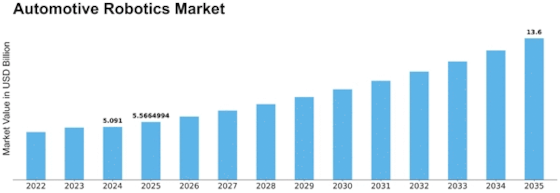

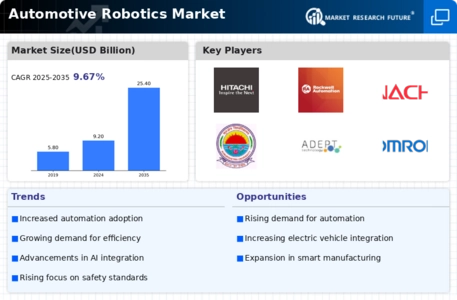

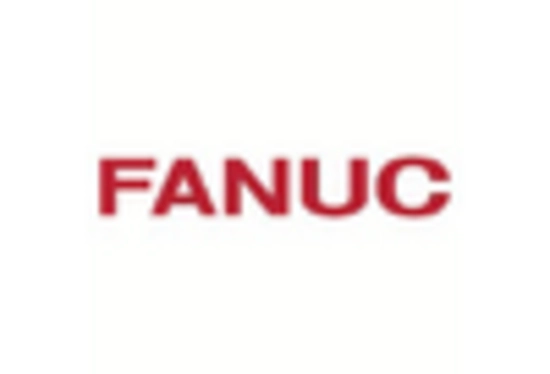

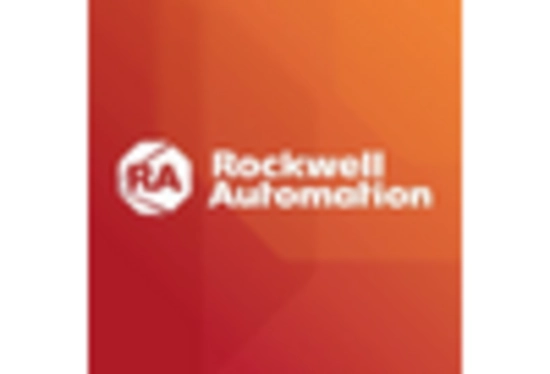

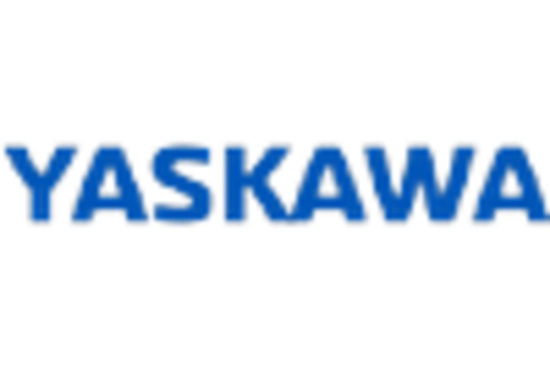

Leave a Comment